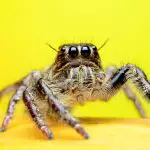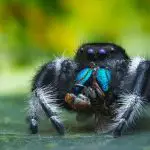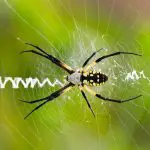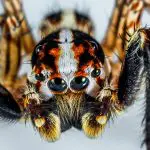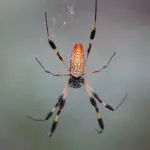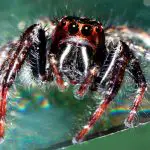Last updated on August 11th, 2023 at 01:39 pm
Time to check out our top 4 best pet Jumping Spiders. Though they are smaller than tarantulas, they are every bit as fascinating and make great pets…
All Jumping Spiders make great pets. They’re small, cheap to house, and incredibly curious. But which species make the best pets? In this article, we’ll look at my top 4: the Tan Jumping Spider, the Regal Jumping Spider, the White Mustached Jumping Spider, and the Bold Jumping Spider. These species are harmless, fun pets that have easy husbandry requirements.
When considering buying a Jumping Spider as a pet, there are a few factors to consider. First, check its health. Healthy jumping spiders have appetites and are likely to be eating mealworms and crickets. Second, consider the enclosure they need – jumping spiders are smaller than tarantulas, making them great escape artists.
1. Tan Jumping Spider (Platycryptus undatus)
The scientific name of the tan jumping spider is Platycryptus undatus. This species has a distinctive undulating pattern on its abdomen and is primarily tan in colour. It can easily jump and traverse vertical surfaces. Despite its appearance, this spider is not highly venomous, and is therefore a good choice for a pet. The best part about getting a tan jumping spider is its low price.
Like its relatives, this spider is known for its spectacular jumps, spanning up to 160mm, or 9x its body length. It is also an excellent choice for beginner arachnid keepers due to its easy care and friendly temperament. This species of spider enjoys handling and is a natural in their habitat. It has a balanced temperament, and is very unlikely to bite.
Easy to find and easy to keep
The Tan Jumping Spider is indeed a popular choice for a pet. The species is found in the US and Canada. This species rarely bites unless necessary and only does so in self-defense. If it is displaced, the spider will try to return to its original environment. The Tan Jumping Spider spends most of its energy courting and communicating with each other.
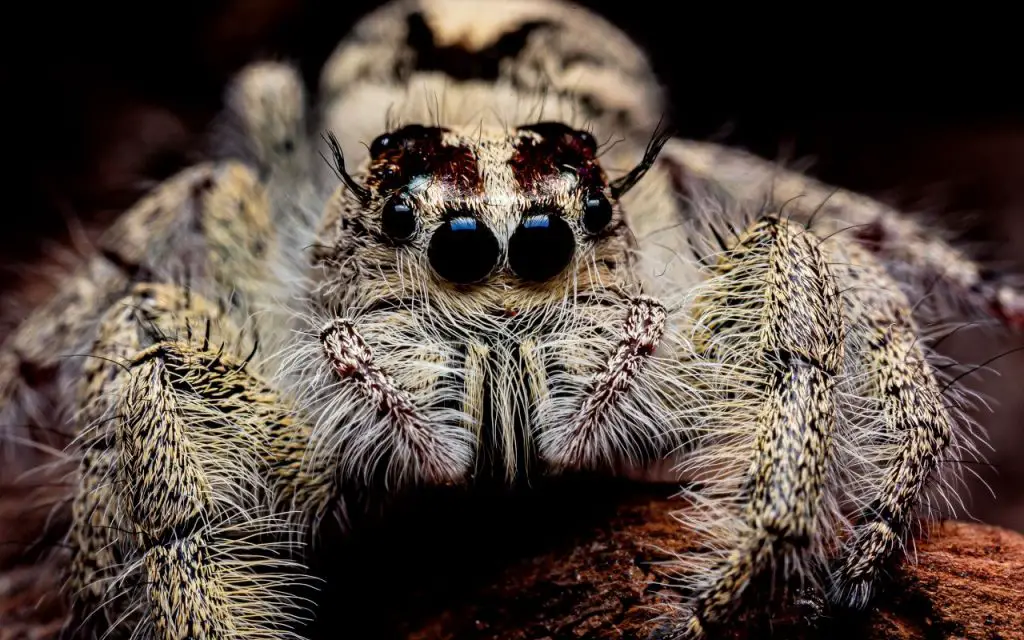
2. Regal Jumping Spider (Phidippus regius)
Perhaps the best pet Jumping Spiders are the Regal varieties. They have big personalities and are affordable to buy. These spiders are found in backyards across the southeastern United States, about as far north as North Carolina. Listed below are some benefits of owning one of these amazing creatures.
- You can find them at local pet stores or online.
- They are easy to maintain and cheap to house.
- They live in sunny locations and require little space – just a reasonably warm environment
The Regal is a slightly larger version of the Bold, which we’ll discuss in a moment. It reaches 3/4 of an inch in length. Its black body is covered in white hair, and it has two iridescent bluish-green chelicerae (frontal jaws). This species is quite friendly and easy to handle. It has simple care requirements and some people even believe it recognizes its keepers.
Their adorable faces and unusual behaviors make them a great pet for beginners. These spiders are great pets for people who are on a budget or have a limited time to commit to caring for one. When properly cared for, they will live for one to three years. The regal jumping spider will bite only if it feels that it is in real danger. Although the bite will not cause much of a puncture, it will require some time to heal.
A spider with a stunning appearance
While Phidippus regius is a beautiful, lovable species of jumping spiders, it has a short life span in the wild. It is likely to die during its early adulthood due to larger predators. However, you can still have a wonderful pet Regal for two to three years in a captive setting.
The diet of the Regal Jumping Spider varies, depending on age. When you get a juvenile, you will need to feed it pinhead crickets and flightless fruit flies. Then, as your spiderlings grows and develops, you can introduce larger insects. Eventually, your pet will be able to eat larger insects and will grow to become a mature adult. Then, you can switch to feeding half-grown crickets.
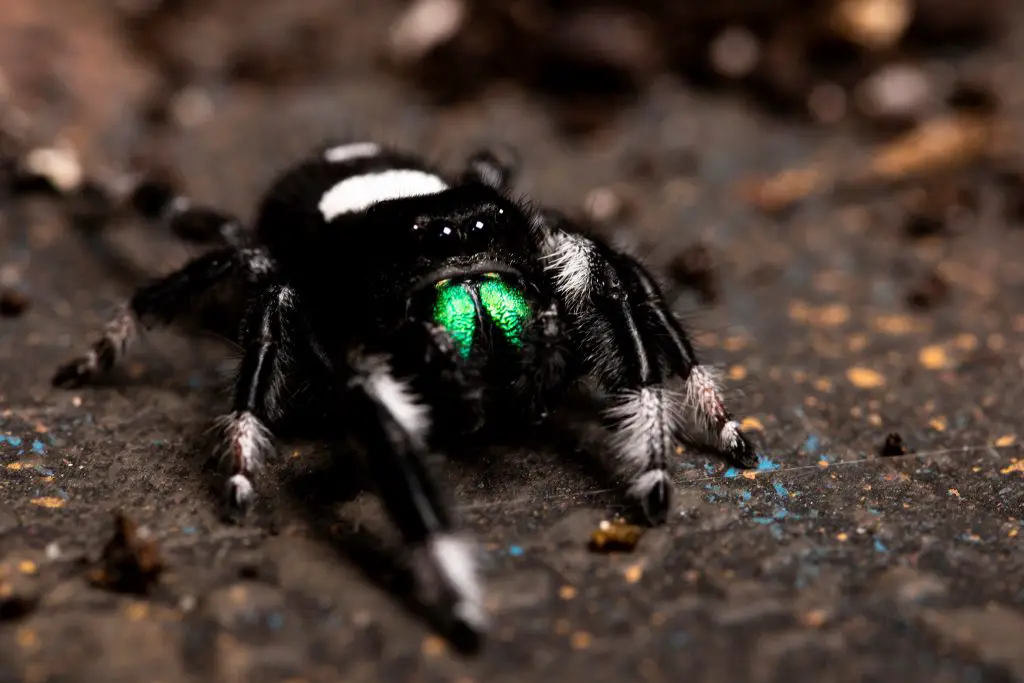
3. White-Mustached Jumping Spider (Portia labiata)
The White-Mustached pet jumping spider is a versatile hunter, which means it can change tactics during a battle. Its ocular vision is better than that of a cat, enabling it to see into the ultraviolet range. The females of this species typically prey on small ants in the Philippines. Their hunting expeditions can last anywhere from three to five minutes, though they can hunt for up to 10 hours.
The White-Mustached pet jumping spider is relatively small – only about a half-inch long. Males are always black, but the female can be gray or orange. The male has three white spots on the back, resembling a smiley face. They prefer open spaces and are not good in closed spaces. This spider is a curious animal, so you will want to make sure the enclosure has adequate ventilation and a very secure lid.
The White-Mustached jumping spider is an attractive, medium-sized species with a unique appearance. Its two fangs are covered in hair and give it its nickname, ‘white-moustached’. Their diet consists of insects and fellow webbed spiders. They are remarkably versatile, adaptable and have excellent memory. They are suited for a wide range of environments, and have evolved to live in humid, warm environments.
A skilled hunter
The White-Mustached pet jumping spider has a robust eye and a small visual field. Because of its size and color, this species is easily recognizable. Its habitats are less dense forests and areas with ambient light. However, it can also live in oil palm plantations. While this species is a popular choice, be careful to choose the best habitat for your White-Mustached pet jumping spider!
Their only real drawback is that they can very easily be harmed if handled too closely or squeezed. Nevertheless, most owners are happy with their White-Mustached pet jumping spiders, as they are safe and easy to care for.
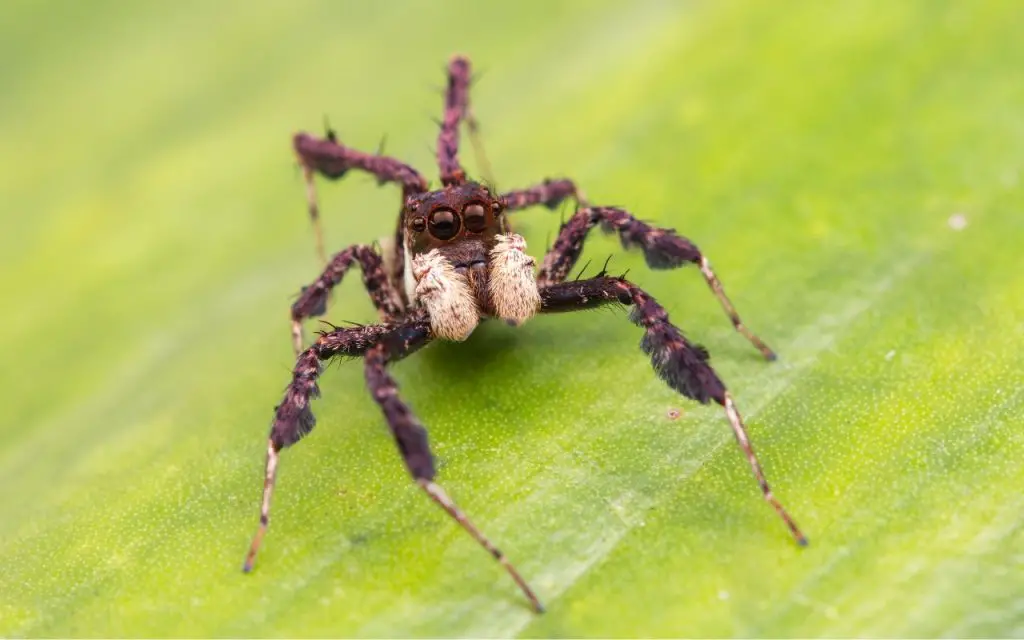
4. Bold Jumping Spider (Phidippus audax)
The Bold Jumping Spider is a smaller version of the Regal and is quite similar in appearance. Both species are black with white markings on the head and legs. The female is grayish-white with two white dots on the abdomen. They have metallic green mouthparts and chelicerae. They prefer open areas. If you’re thinking about getting one for pet, be sure to read up on its care before you bring it home.
The male and female Bold Jumping Spiders are about 8 to 15mm in length, which is above average size for jumpers. Their black bodies are covered in white hairs. They have a large, triangular spot on the middle of their abdomen, and two smaller spots on their posteriors. The larger spots are either white or yellow. This spider has powerful hind legs that allow it to leap long distances.
When buying a Bold Jumping Spider for pet, be sure to keep a few basic safety precautions in mind. The venom of this spider isn’t harmful to humans, so you don’t need to worry about it biting you. A properly-cared Bold Jumping Spider should be kept in a container that is both safe and secure but well-ventilated.
A cheap pet
Depending on where you live, this species can cost anywhere from $10 to $30. A terrarium, meanwhile, can cost from twenty to thirty dollars. A sizable jar can cost as little as $10.
The size of the terrarium you’re going to buy is essential for your Bold Jumping Spider’s health. It needs to be at a temperature of at least eighty degrees Fahrenheit. Using an under tank heater is not recommended. A space heater may be a better option if you live in a colder climate.
Also, make sure that the enclosure is away from direct sunlight, as these can quickly get dangerously hot. Another important factor is humidity. It should be between 50 and sixty percent, but you can increase the humidity by adding a small bowl of water.
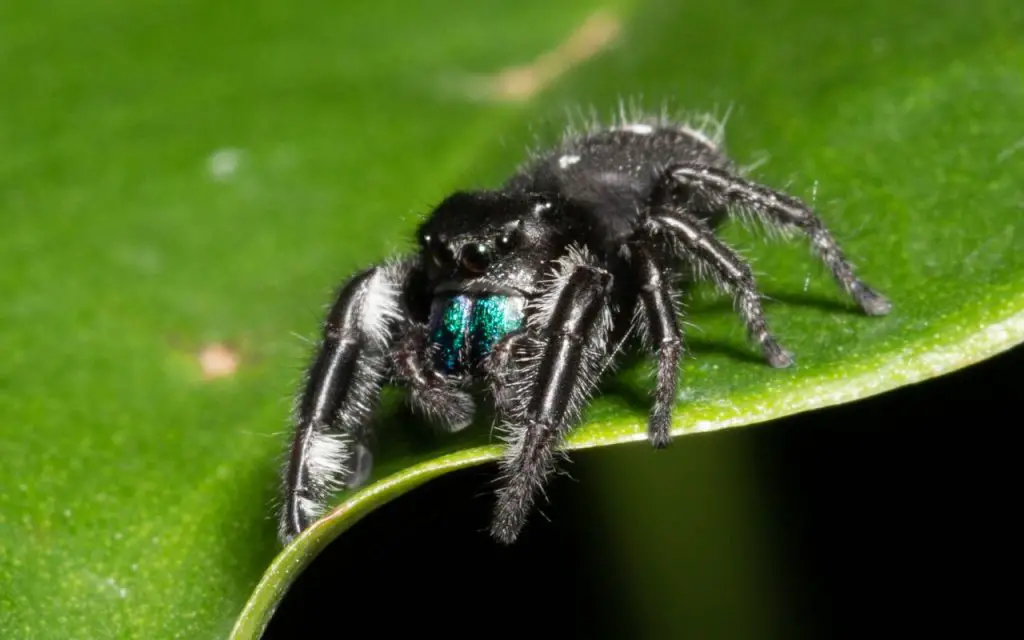
Do jumping spiders like being pet?
Jumping spiders don’t enjoy being pet like a cat or a dog would. Obviously, we’re big enough to crush them so it’s normal for them to be cautious. They do like to watch us, and to occasionally come out and explore though. It’s a curiosity thing more than anything else.
Can I hold my pet jumping spider?
You can hold your pet jumping spider if it is willing to come out of its enclosure. If it readily crawls onto your hand, or crawls out of the top, then this means it wants to come out and explore. If it avoids your hand, however, it wants to be left alone and you should respect its decision.
What is the most friendliest spider?
Personally, I think Bold and Regal Jumping spiders are the most interactive and inquisitive species. They clearly watch us with interest and have some kind of intelligence. They won’t bite unless they no other choice, either.
How big do pet jumping spiders get?
Jumping Spiders are all small species in the Salticidae family. Even the largest jumpers only get to 3/4 of an inch (18mm) in legspan. This is tiny when you compare it to some tarantulas that reach over 8 inches (20cm). It has to said that what they lack in size, they more than make up for in personality. In my opinion (and that of most scientists) they are the most intelligent spiders so far discovered.

